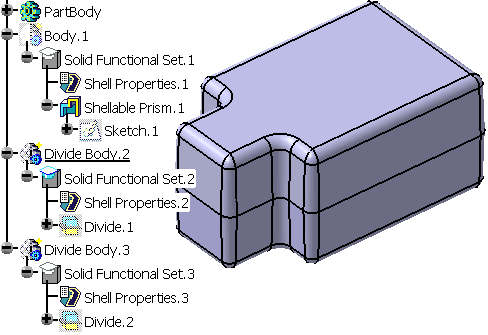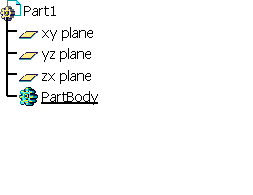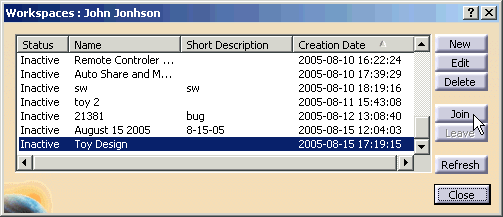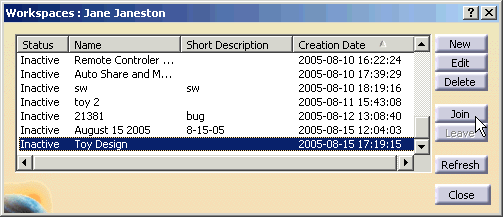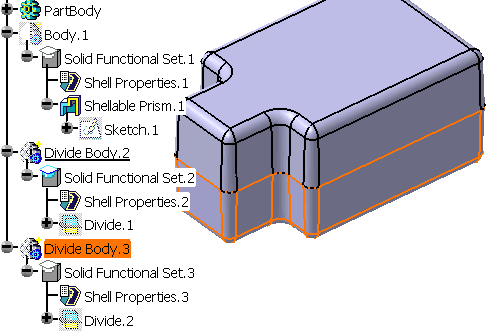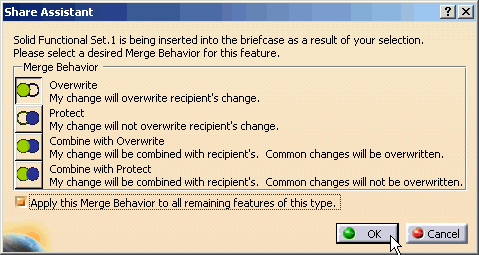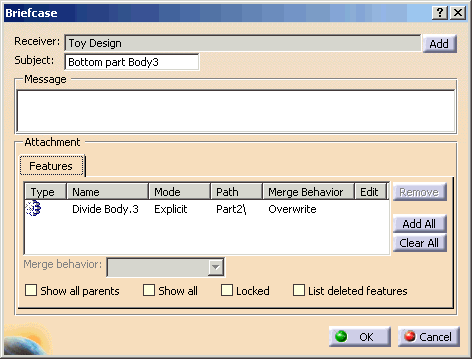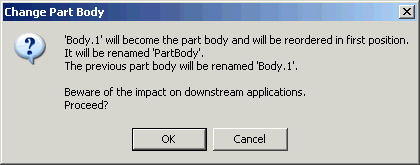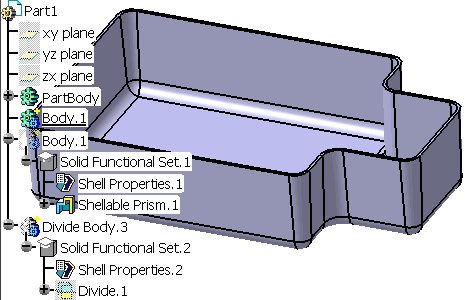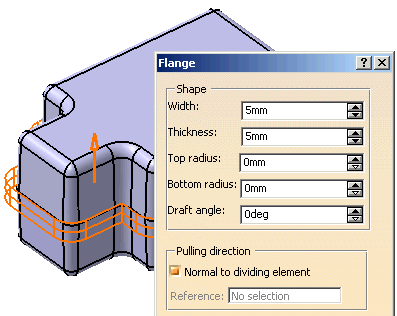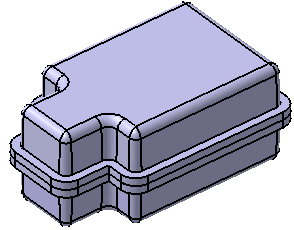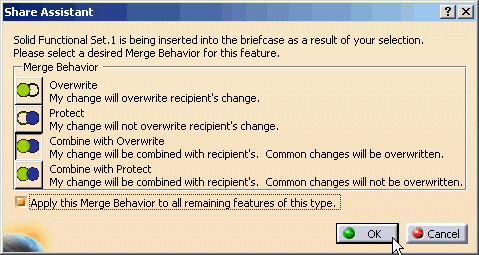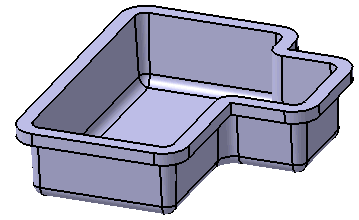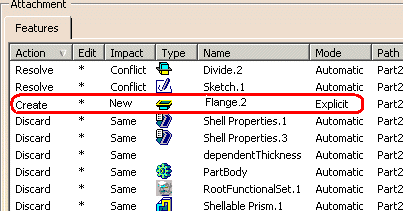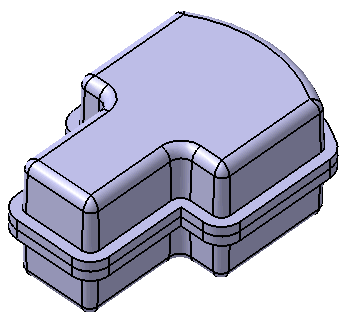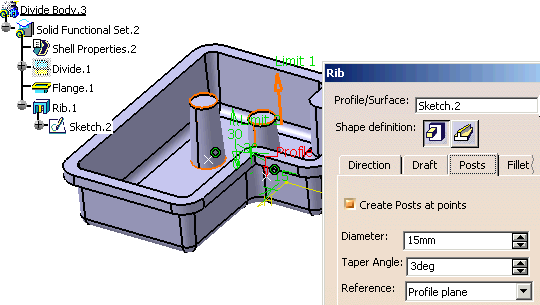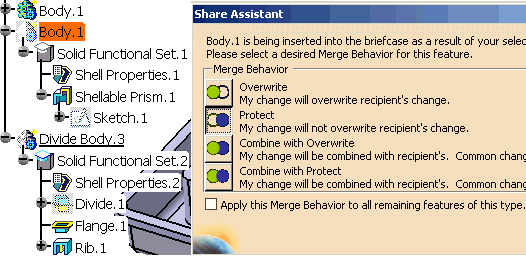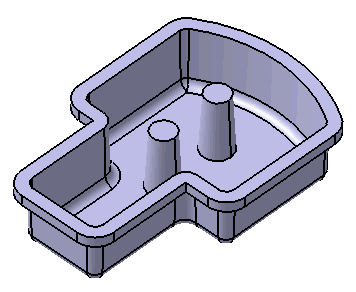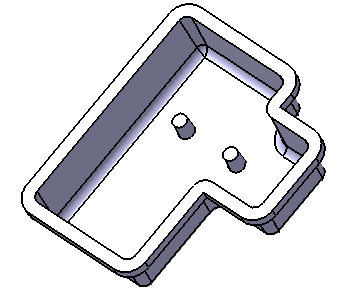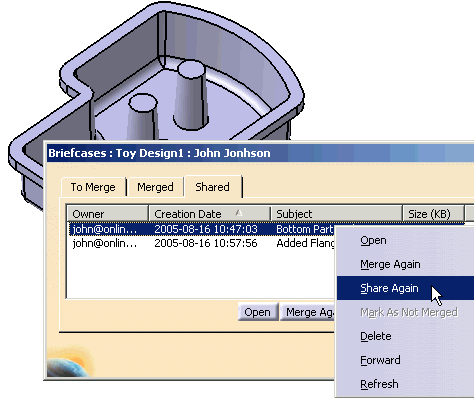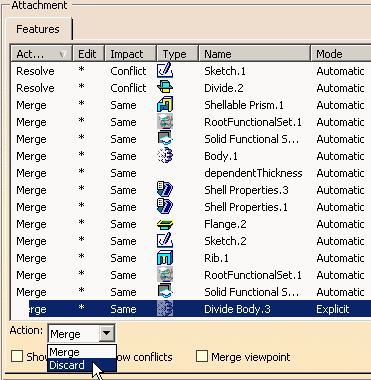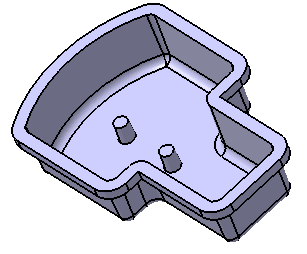The scenario describes an effective way of using Share and Merge Assistants to design a model in a group. The Share Assistant let the user specify his intention at the time of Share and make it easier to communicate it to the receiver. The Merge Assistant helps the receiver analyze the impact of the briefcase and take accurate decisions on what should be or should not be merged. This step by step scenario shows the simultaneous development of a model with two designers using Functional Molded Part and Design Collaboration.
| This symbol is used throughout the scenario to symbolize the part designer named John. | |
| This symbol is used throughout the scenario to symbolize the mold designer named Jane. |
|
You need to have Collaborative Design configured in Client/Server mode to execute this use case, and have access to two users on the server. You need to set Use share assistant and Use merge assistant and Force manual resolution of conflicts in Tools -> Options -> Infrastructure -> Collaboration Infrastructure -> Collaborative Design. The initial part for this use case is Toy1.CATPart. 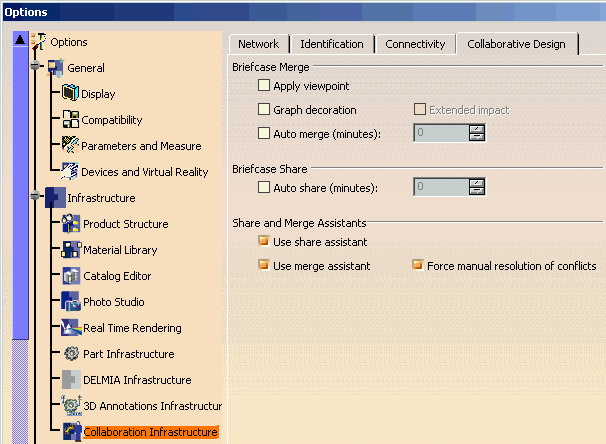 |
|
|
|
John has a toy part with a shellable prism. The part is divided and John wants Jane to start working on one of the halves while he finalizes the overall design.
|
Jane creates a new part.
|
|
John creates a new Workspace and joins it.
|
Jane also joins the same Workspace.
|
|
John selects Divide Body.3 in the specification tree and selects Share Selected Entities icon to share Divide Body.3. Share Assistant dialog pops up. John chooses Overwrite for Solid Functional Set.1 (shown), Body.1 and Solid Functional set.3 so that Jane will get the same part as John has.
|
Jane merges John's briefcase. Jane gets the bottom part of the Toy design.
|
|
John adds a flange by selecting Flange icon with 5mm Width and Thickness.
|
Jane modifies the sketch of the bottom part to change the shape.
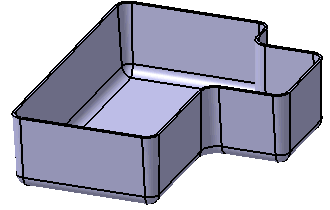 |
|
John shares a newly added Flange.2 under Divide Body.3 in the specification tree and selects Share Selected Entities. This time John chooses Combine with Overwrite to protect Jane's changes and force John's flange.
|
Jane merges John's briefcase. Because John has not chosen Overwrite, Jane can keep her modification to the bottom part and merge John's Flange in her part.
|
|
John modifies Body.1 to change the shape of it.
|
Concurrently, Jane adds two posts using the Rib feature.
|
Jane shares the Rib feature. She wants to make available the Post and does not want to accidentally overwrite possible changes to the Body 1. Therefore she instructs the Share Assistant to mark it as Protect in the briefcase.
|
|
|
John merges Jane's briefcase. John has since modified Body.1. Thanks to Share Assistant that prompted Jane to think about the merge of Body.1, John is able to merge Jane’s additions to Divide Body.3 without overwriting his own modification to Body.1.
|
Jane modifies the dimension of the posts.
|
|
John shares it using Share Again. Because John has finalized his design, now he decides to update Jane’s view of the model. To do so he chooses Share Again the initial briefcase. That selects Divide Body.3; Share Assistant again prompts for Body.1 behavior and John chooses Overwrite because he does want Jane to use the new profile.
|
Jane merges John's briefcase. However this briefcase would overwrite Divide Body.3 and some additional edits from Jane. To solve the problem she uses Merge Assistant to resolve the conflicts. She instruct the merge to discard Divide Body.3 but to merge Body.1. She can now merge John’s changes and integrate them in the target body while preserving her own modification to the bottom half
|
|
|
Jane can integrate John's design with her posts successfully.
|
